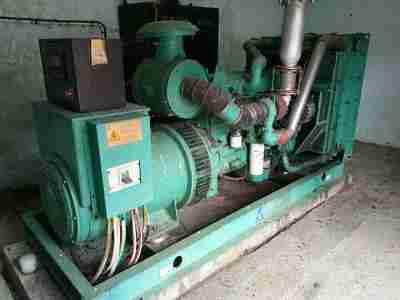Gasification Definition, Comparison and Principle Explained
Gasification is the process of converting carbonaceous materials into gas, that can be used as an energy source. This article discusses gasification definition, comparison and principle, as outlined below;
-Gasification Definition 7 Ways to Define Gasification
Gasification Definition 7 Ways to Define Gasification
Gasification is the thermal conversion of biomass, and other organic materials, into gas [1].
The above gasification definition mentions biomass as one of the raw materials (or ‘substrates’) involved in gasification. Other relevant raw materials are mentioned in the definition below;
Gasification is a technical and physicochemical process that involves the breakdown and conversion of organic or bio-based materials like wood, coal, plastic, and municipal solid waste, to gaseous products.

Below is an alternative gasification definition which highlights some products of the process;
Gasification is a thermal process whereby organic materials are physicochemically altered and transformed to mostly gaseous products that include methane (CH4), carbon monoxide (CO), carbon dioxide (CO2), nitrogen (N2), steam (H2O), and hydrogen (H2) [3].
Generally, gasification proceeds under predetermined conditions, in order for it to be predictable and effective. Some of these conditions are mentioned in the gasification definition below;
Gasification is a controlled process in which organic feedstock is subjected to high temperature conditions (generally above 700°C), in the presence of steam and a regulated amount of oxygen; to yield gaseous products like nitrogen, carbon dioxide and hydrogen [2].
An alternative gasification definition is given below, from the perspective of circular economy and waste management;
Gasification is a waste-to-energy process which recycles organic materials by subjecting them to thermal treatment and physicochemical transformation, thereby yielding a series of predetermined products.
The above gasification definition portrays the concept as a form of recycling. This is true from the perspective of resource conservation. Gasification recycles waste by converting it into energy (which could be called bioenergy) in the form of flammable products (biofuels).
It is also possible to describe gasification as a method for achieving environmental sustainability, due to its role in mitigating plastic pollution and other waste-related forms of environmental degradation like stormwater pollution, soil pollution, flooding and erosion.
The gasification definition below highlights other uses or areas of importance, of gasification;
Gasification is a thermo-chemical conversion process which manages organic waste by transforming it to flammable gases that could be electricity generation and transport, among other purposes.
Lastly, the gasification definition below makes mention of some of the types of gasification;
Gasification is the transformation of an organic substrate, to gaseous products, by any of various methods such as fluidized bed, entrained flow, and moving bed methods [4].
Principle of Gasification
The principle of gasification is thermo-chemical change; whereby the application of heat leads to desired changes in the chemical composition of a material.
This is similar to the principle(s) behind other thermal conversion processes like incineration and pyrolysis.
Each aspect of the principle is discussed separately below;
1). Thermal Change (as part of the Principle of Gasification)
In gasification, thermal change refers to the change in temperature of a substrate or feedstock, which occurs as a result of the application of heat energy.
It is usually the first noticeable change that occurs in the gasification process, and does not involve any chemical alteration or formation of gasification products.
Rather, thermal change is a physical process that is observed mainly in the form of temperature alteration, and moisture loss. Physical deformation also commonly occurs alongside thermal change, often in the form of size decrease.
2). Chemical Change (as part of the Principle of Gasification)
Chemical change in the gasification process, is directly influenced and caused by thermal change.
It involves irreversible changes in the composition of the substrate, and is indicated by the formation of gasification products.
The pathway of chemical change (and the products formed) can be controlled by regulating the physicochemical conditions of the process, including temperature, pressure, and availability of oxygen, among others.
Conclusion
Gasification is the thermo-chemical transformation of organic materials like wood, coal and plastic, to gaseous products like CO2 and hydrogen.
The principle of gasification is thermal and chemical change, which occur almost simultaneously in the gasification process.
References
1). Ajay, K.; Jones, D. D.; Hanna, M. (2009). “Thermochemical Biomass Gasification: A Review of the Current Status of the Technology.” Energies 2(3). Available at: https://doi.org/10.3390/en20300556. (Accessed 6 October 2022).
2). Bonilla, J.; Gordillon G.; Cantor, C. (2019). “Experimental Gasification of Coffee Husk Using Pure Oxygen-Steam Blends.” Frontiers in Energy Research 7. Available at: https://doi.org/10.3389/fenrg.2019.00127. (Accessed 6 October 2022).
3). Chojnacki, J.; Najser, J.; Rokosz, K.; Peer, V.; Kielar, J.; Berner, B. (2020). “Syngas Composition: Gasification of Wood Pellet with Water Steam through a Reactor with Continuous Biomass Feed System.” Energies 13(17):4376. Available at: https://doi.org/10.3390/en13174376. (Accessed 6 October 2022).
4). Schwabauer, A.; Mancini, M.; Poyraz, Y.; Weber, R. (2021). “On the Mathematical Modelling of a Moving-Bed Counter-Current Gasifier Fuelled with Wood-Pellets.” Energies 14(18):5840. Available at: https://doi.org/10.3390/en14185840. (Accessed 6 October 2022).









